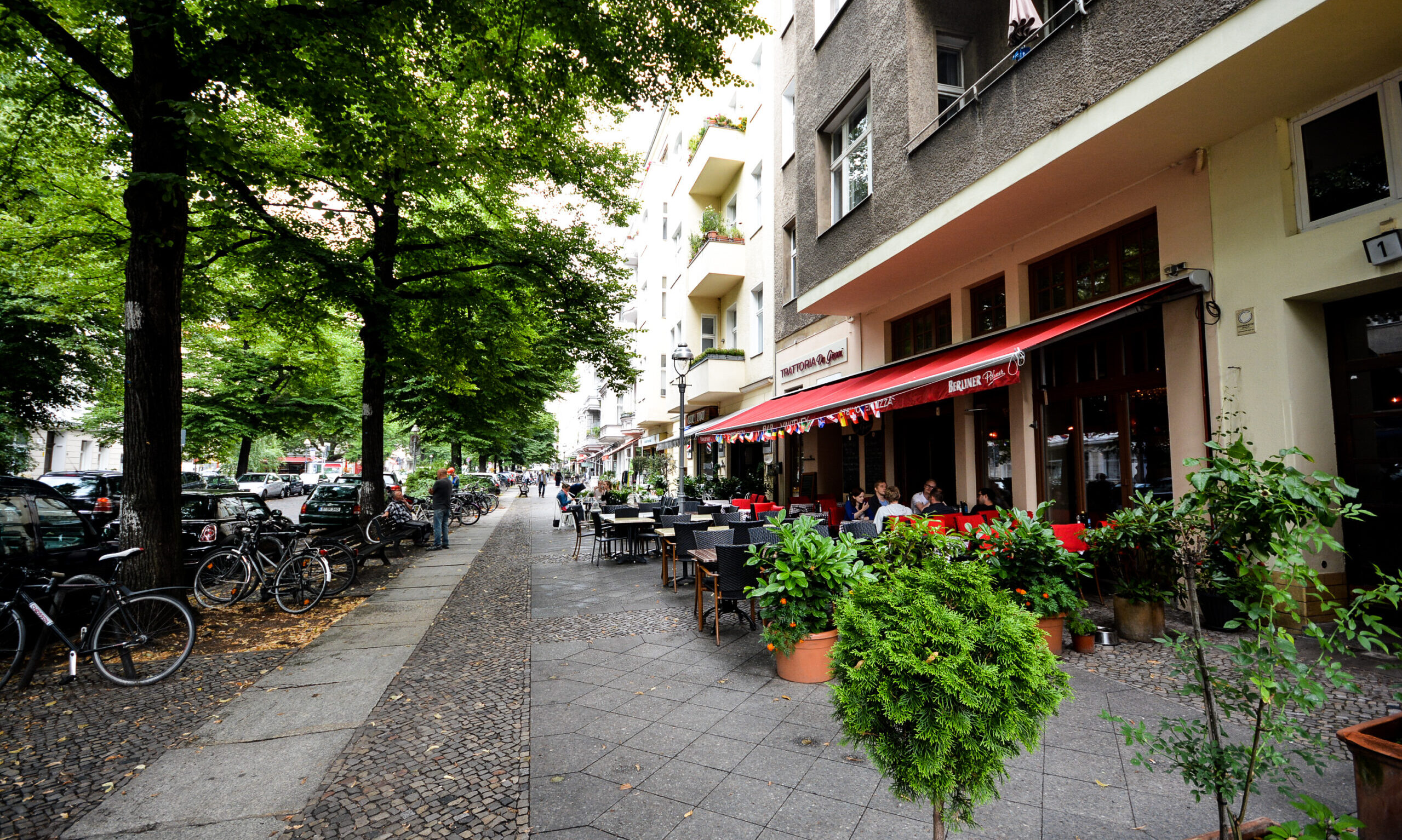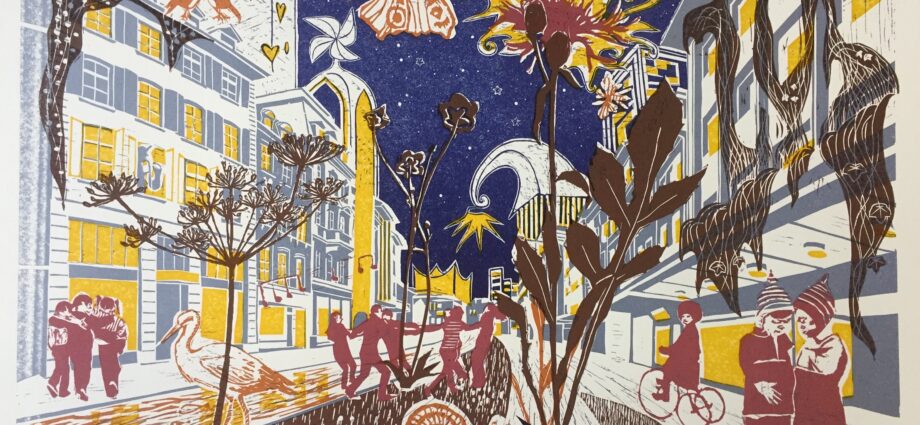FRIDAY ART FEATURE: EMMANUELLE HOULMANN & ROMAN TSCHACHTLI
Emmanuelle Houlmann is a children’s book author and illustrator, a meditation teacher and a project manager for peace based education projects based in Biel/Bienne, a small Swiss city where the people speak German and French (hence the two names). She develops her illustrations with her husband Roman Tschachtli, an architect who thinks that cities shouldn’t be developed and conceptualized as concrete streets for cars but rather living spaces for human beings. Leola & Nena, their children (11 and 9 years old), are also involved in the creation of the illustrations and children’s books.
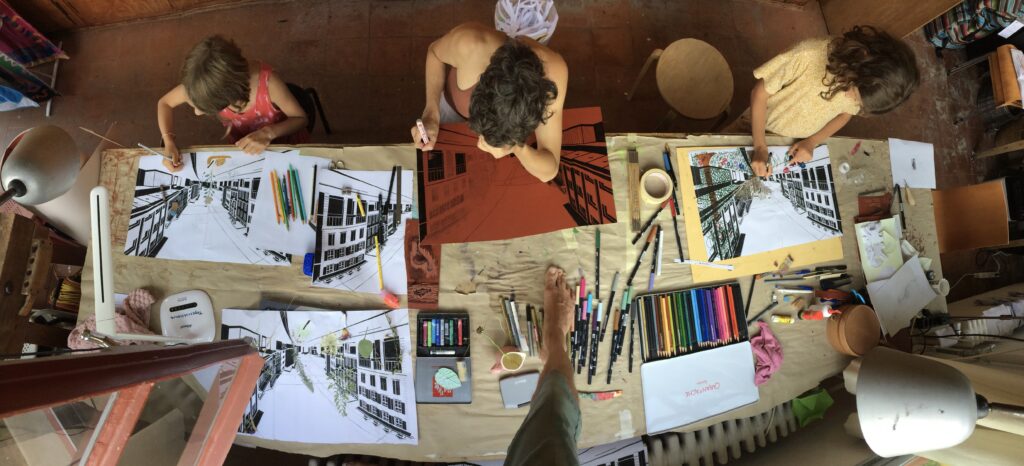
Pedestrian Space: What cities inspire your work?
Emmanuelle: A city that inspires us a lot is the Spanish city Pontevedra, which banished cars in the centre and reorganized their urbanism around pedestrians. Or small Swiss alpine villages like Saas Fee or Zermatt which are good examples as well for intelligent traffic management and maintained life quality.
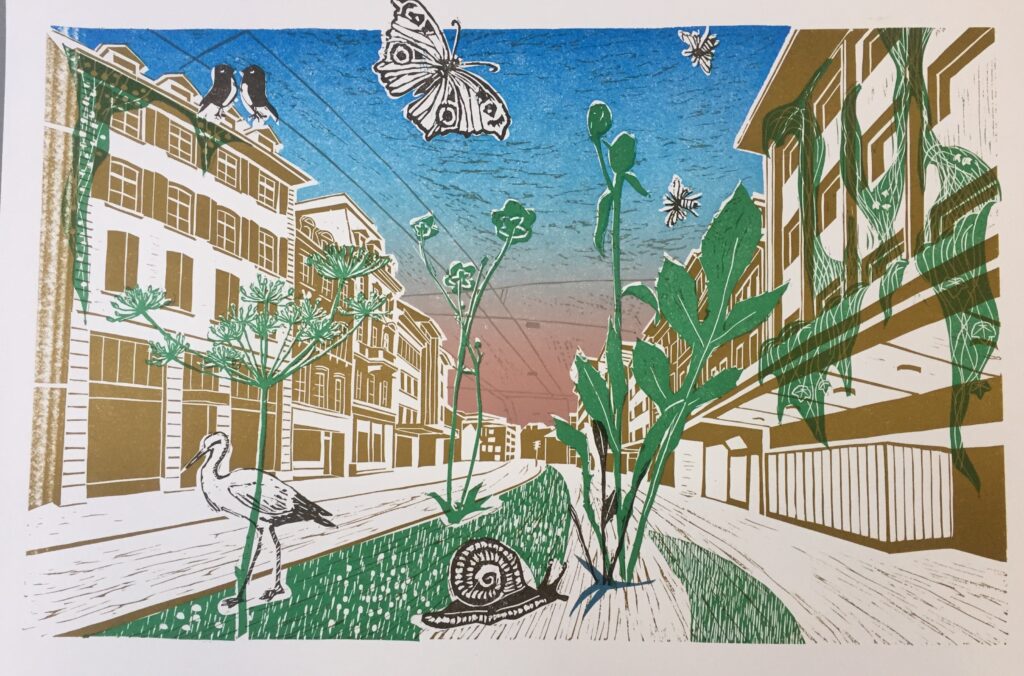
Pedestrian Space: What is the relationship between the city and your art? How does urbanism influence your work?
Emmanuelle: Urbanism is one of the main issues for us. The way politicians develop urbanism clearly show the priorities they have. When the main priorities are money and cars, the life quality of the inhabitants is really poor. That’s why many Swiss people are looking for lost quality by buying houses in the countryside. Doing that, they use the territory which could be just natural spaces and forest for everyone and instead increase the need for cars, which is absurd to our sensibilities.
“A city that inspires us a lot is the Spanish city Pontevedra, which banished cars in the centre and reorganized their urbanism around pedestrians. Or small Swiss alpine villages like Saas Fee or Zermatt which are good examples as well for intelligent traffic management and maintained life quality.”
Emmanuelle Houlmann
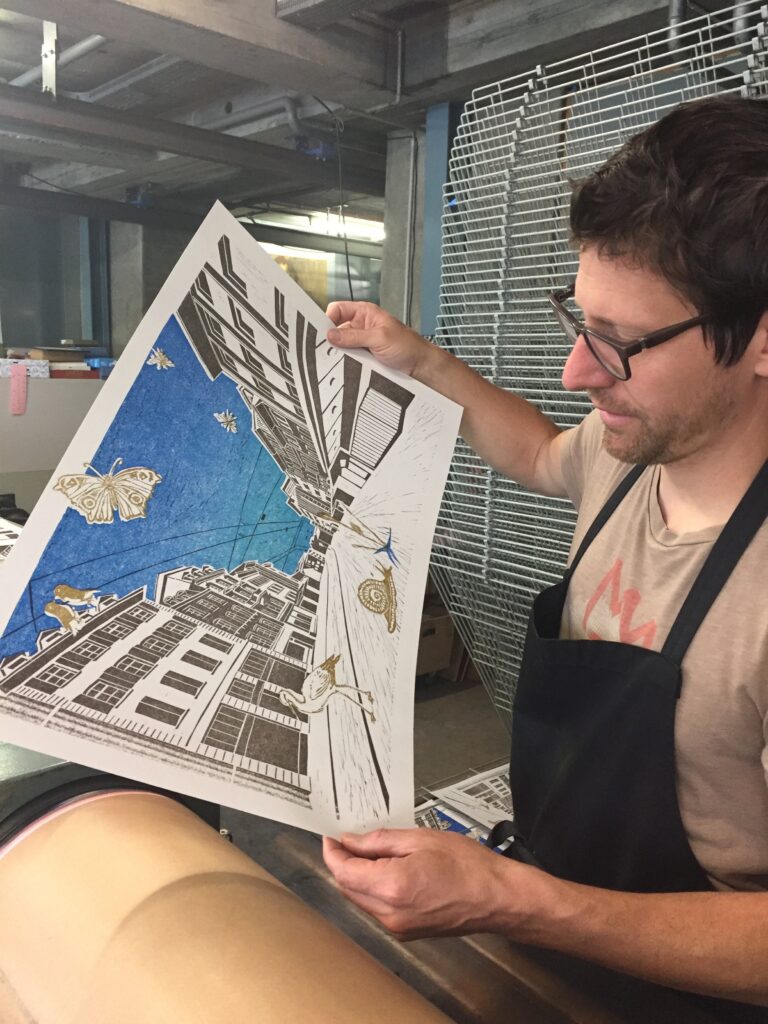
Pedestrian Space: What mediums do you work with?
Emmanuelle: As we advocate for a slow lifestyle, we choose a slow method for developing our illustrations. The images are Linocuts accompanied by texts composed by hand with lead characters, printed on one-color letterpresses in the Officina Helvetica, an old print fabric in Biel/Bienne (www.officina-helvetica.ch). Our work “Blume de bitume” is a limited edition of 111 books. Each copy is unique.
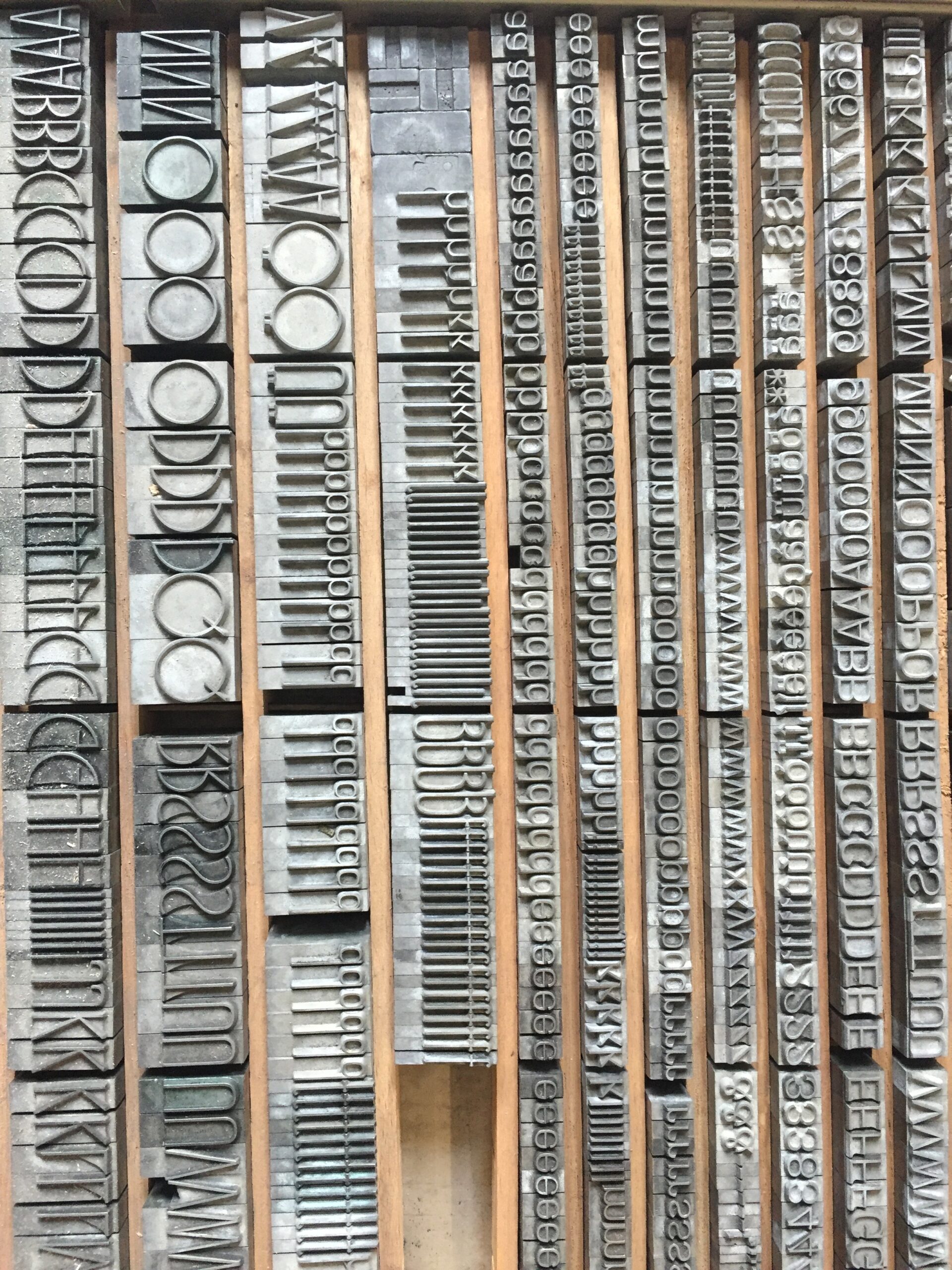
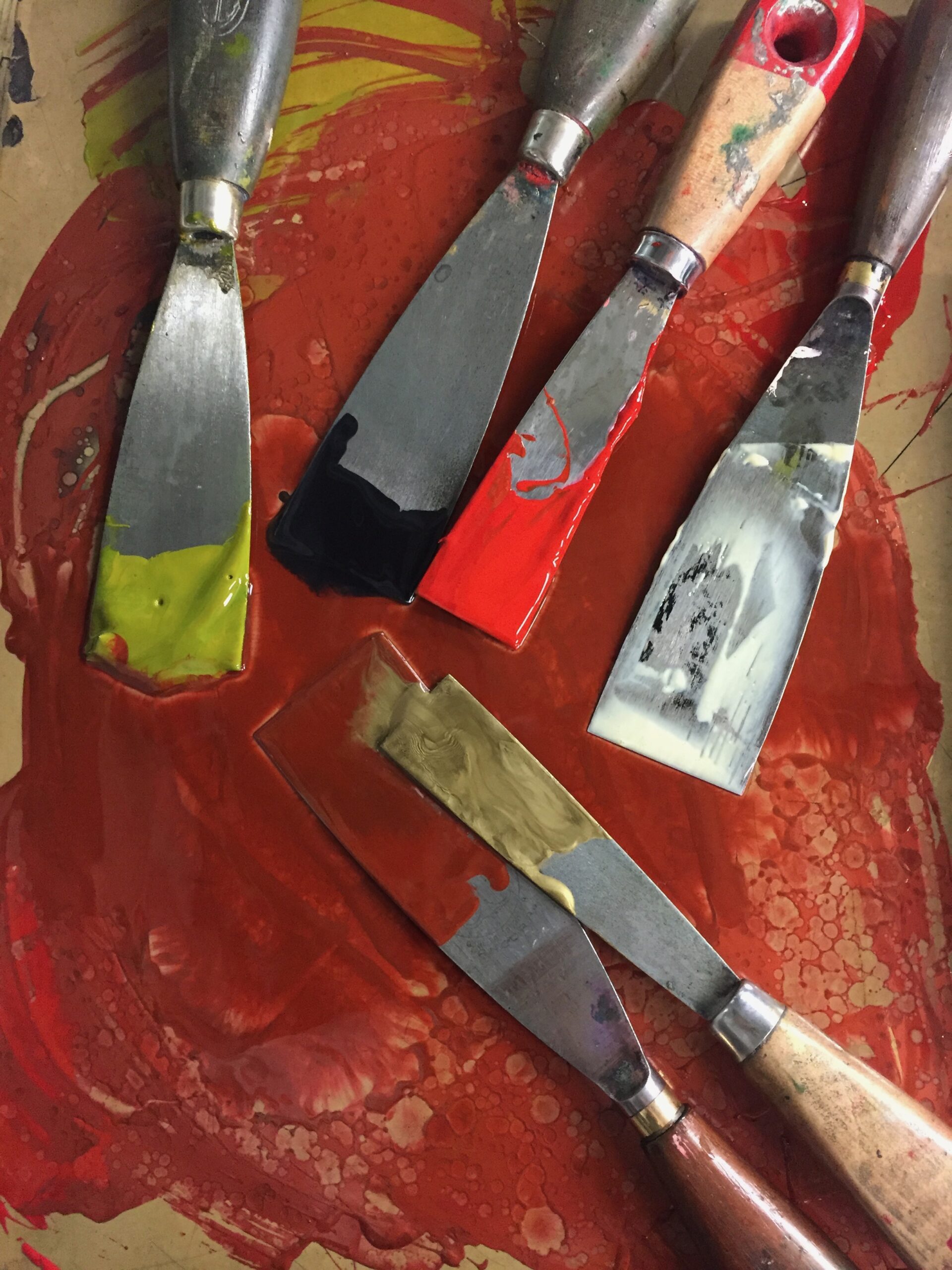
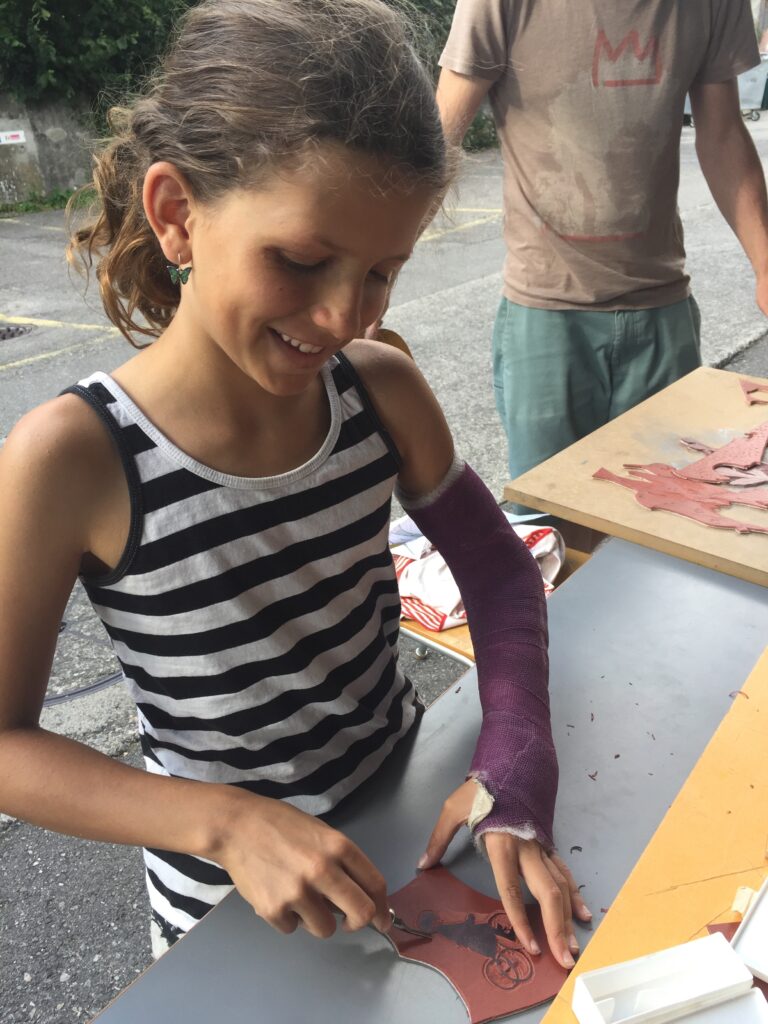
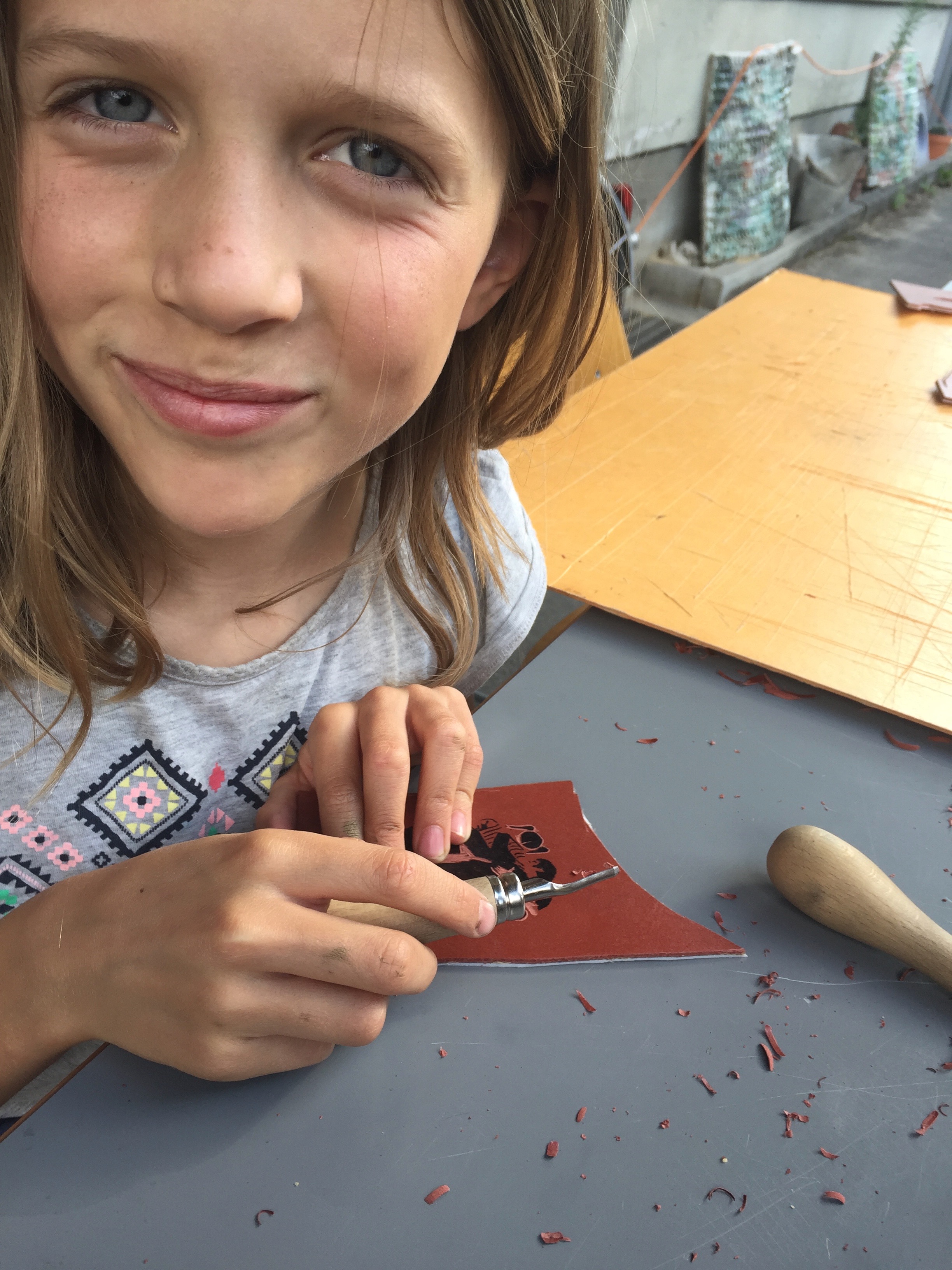
Pedestrian Space: How do you move around the city and what is your favorite mode?
Emmanuelle: As we are living in a cooperative housing car-free project, we haven’t owned a car since 2013 and have no intention to own one once again. For us, living without car is a synonymous with liberation. Walking is my favorite and everyday mode of displacement. Roman is more of a bike guy and the children are going around with push-bikes and skateboards. If we need to go to other cities, we take the train.
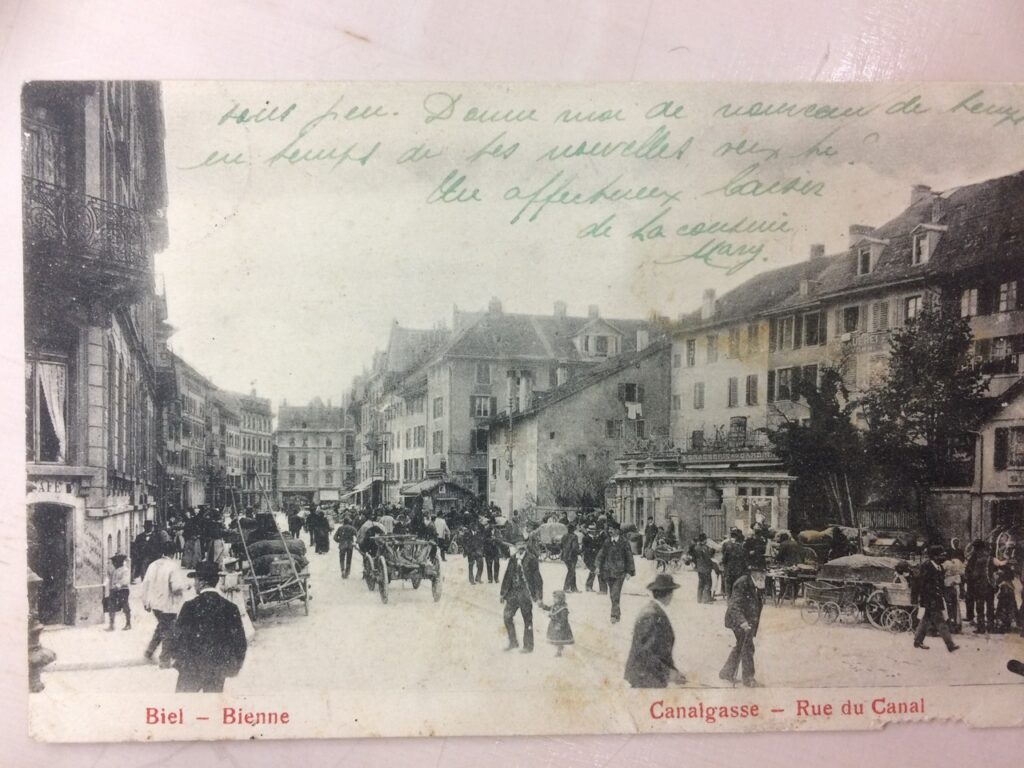
(Image Emmanuelle & Roman found in the archives of Biel/Bienne)
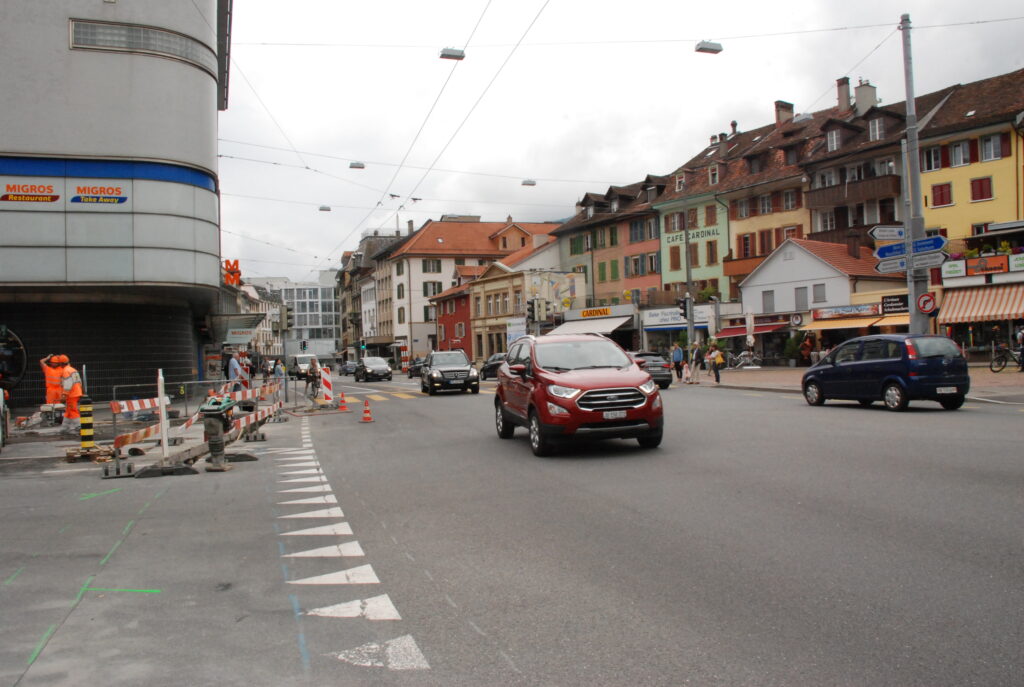
Photo by Emmanuelle & Roman & is the same street pictured in their children’s book, from the other perspective.
Pedestrian Space: What is your favorite street or sidewalk space in your city?
Emmanuelle: I like walking everywhere in my city. Roman and I love observing urban spaces of all kinds. If we want to create great living spaces, we have to analyze why some urban spaces are pleasant or not. Pleasant spaces attract people naturally and unpleasant spaces are empty. We can always observe that places filled with cars are dead spaces.
We also enjoy the forests, the lake and the Jura mountains around our town.
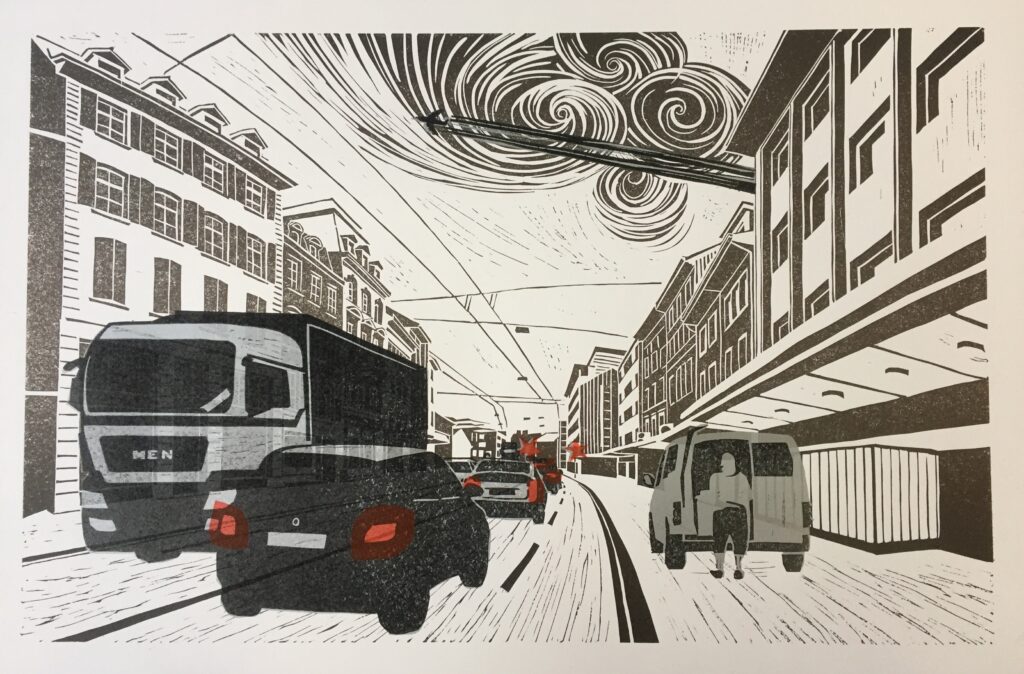
Illustration by Emmanuelle Houlmann & Roman Tschachtli
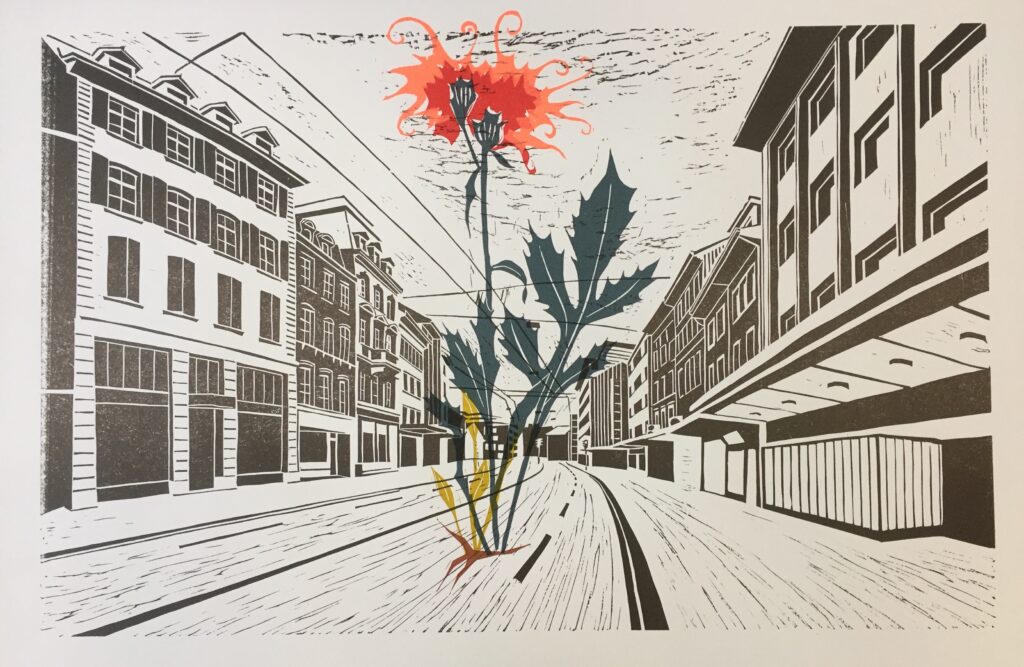
Illustration by Emmanuelle Houlmann & Roman Tschachtli
“For us, living without car is a synonymous with liberation. Walking is my favorite and everyday mode of displacement. Roman is more of a bike guy and the children are going around with push-bikes and skateboards.”
Emmanuelle Houlmann
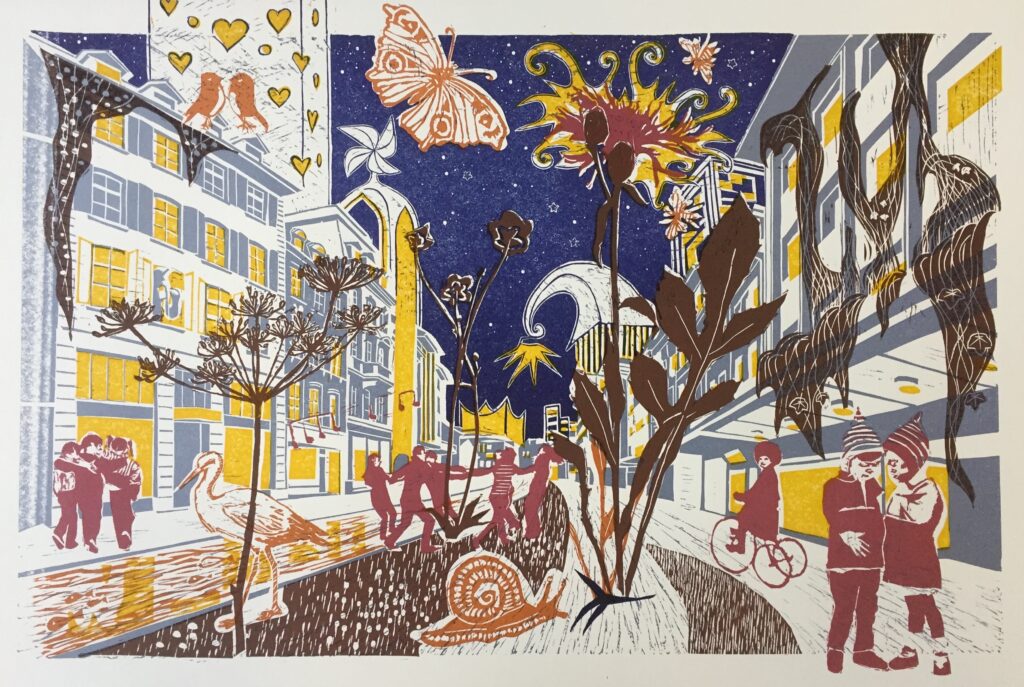
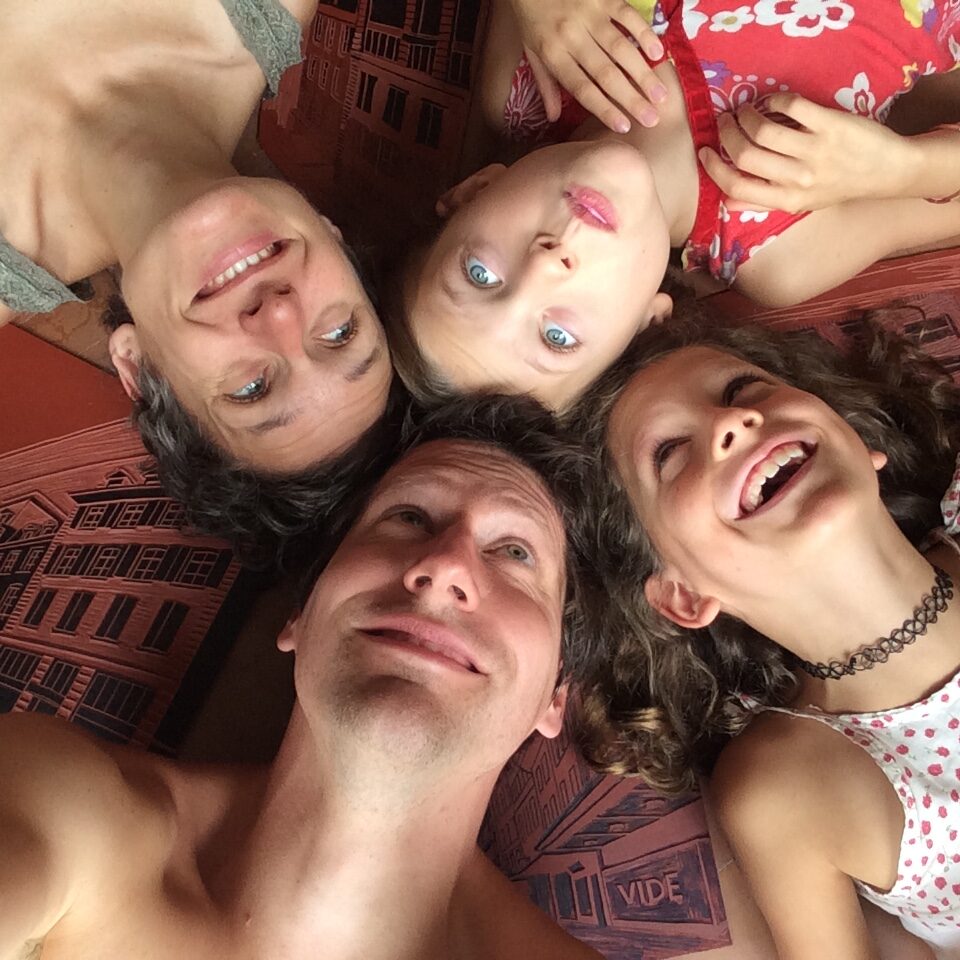
Visit Emmanuelle online at Instagram @emmanuellehoulmann & Roman at https://verve-architekten.ch/projekte/
Photo: The whole family & some linoleum cuts
